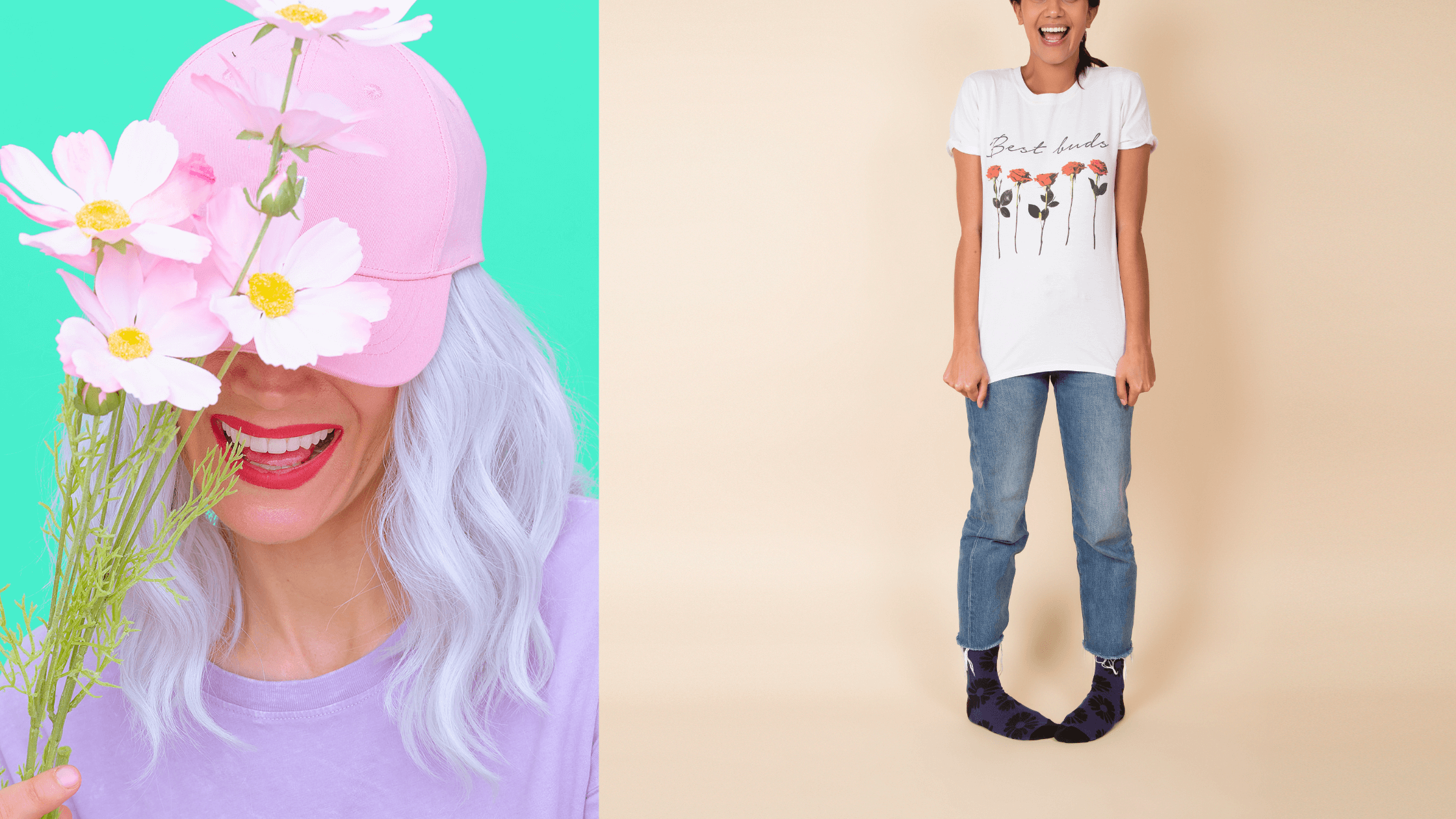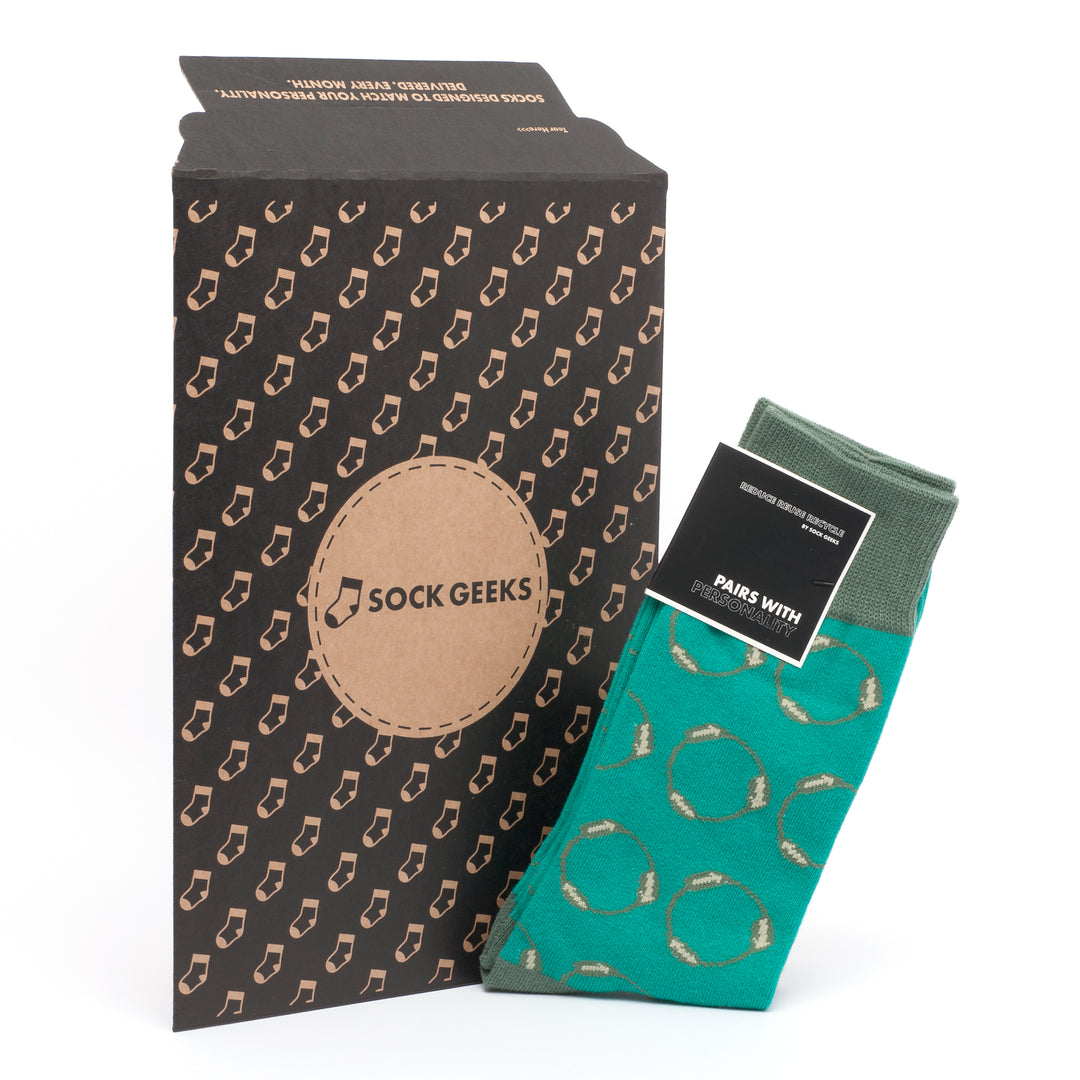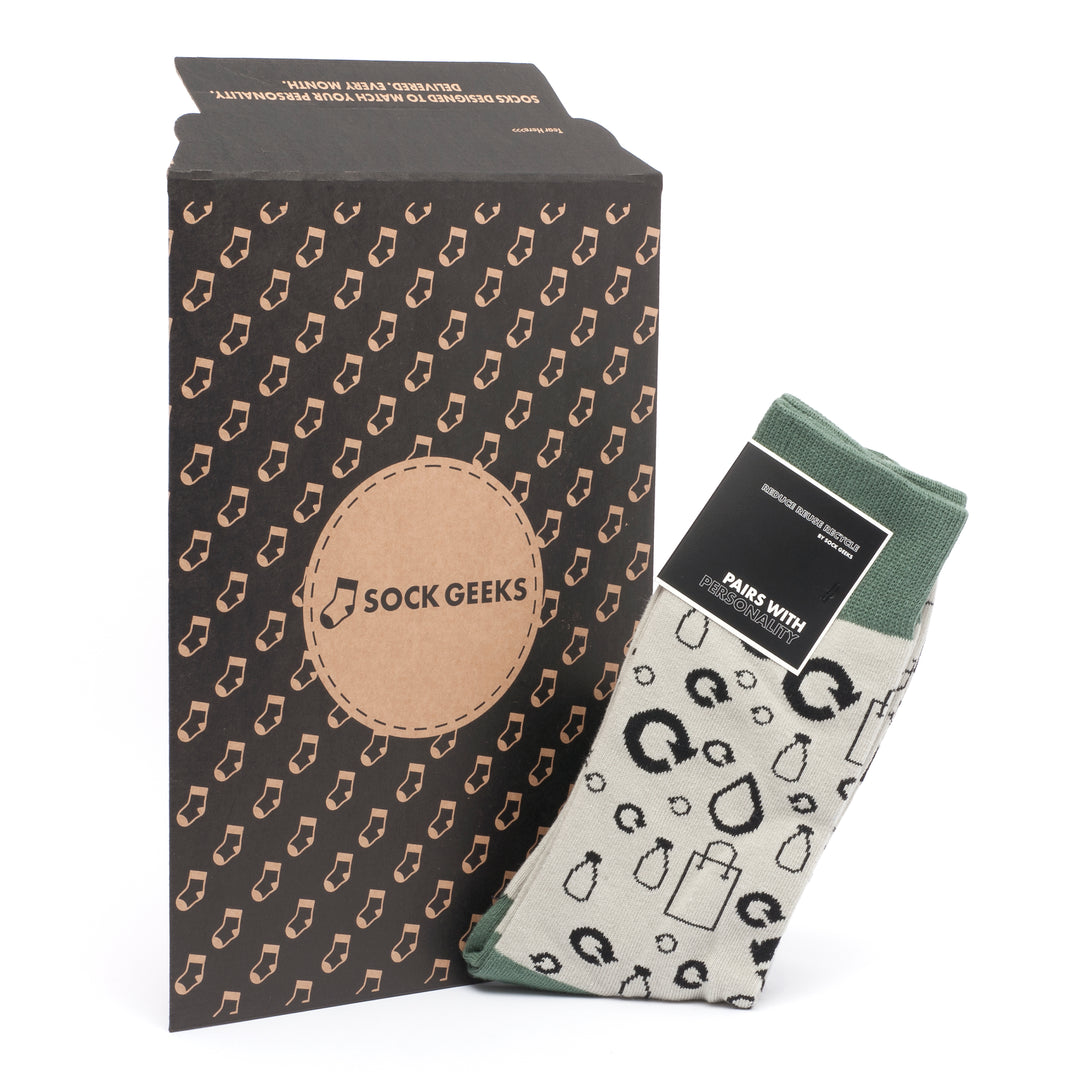Guide to Sock Longevity: How Often to Rotate and When to Retire
Key Takeaways
-
High-quality, long-lasting socks can save you money in the long run - they need replacing less often and will really improve your wardrobe.
-
Opting for biodegradable or recyclable socks reduces environmental impact and supports global sustainability initiatives.
-
Gentle washing, appropriate drying techniques and appropriate storage all play a role in making your socks last longer and work better.
-
Choosing socks with reinforced zones, advanced knitting techniques and durable elastic provides increased durability, especially in high-impact areas.
-
Proper rotation and regular replacement of old socks, when they become worn or lose their comfort, can safeguard foot health and facilitate better hygiene.
-
Practising conscious consumerism, through recycling worn-out socks and supporting sustainable brands, can help reduce textile waste and promote responsible choices globally.
A sock lifespan guide provides transparent information on how long socks last with regular day-to-day wear and care. The vast majority of socks will retain their shape and comfort for six to twelve months, though this varies with the fabric, how often they’re worn and how they’re washed. Cotton & wool socks tend to wear out more quickly than synthetic ones. Holes, thin fabric and looser tops indicate when to replace your favourite pairs. So iStock advises us to keep socks in great condition by washing in cool water and drying flat. In the main section, discover top tips on selecting durable socks, how to identify wear and tear, and sock maintenance advice. These tips will help to keep your socks in good condition and save you money.
Why Sock Longevity Matters
Sock longevity is about so much more than everyday ease; it significantly impacts money, personal behavior, and the health of the planet. By prioritizing quality socks made from durable materials, individuals can enjoy optimal comfort while reducing waste and unnecessary wear. Longer-lasting socks lead to savvy spending and a more sustainable lifestyle.
-
Save money by buying fewer replacement pairs over time
-
Save on shipping and packaging by ordering less frequently.
-
Lower the frequency of shopping trips or online orders
-
Steer clear of the hidden costs of cheap, throwaway socks (such as foot health problems)
Beyond the Bin
With millions of socks ending up in landfill every year, sock longevity is becoming an increasingly important issue in addressing worldwide textile waste. Most synthetically made socks don’t break down for years, which damages the planet. Responsible disposal makes a difference. Recycling schemes, donations and inventive repurposing (think cleaning cloths or dog toys) all work to keep socks out of landfills.
Certain brands make socks that are easier to recycle, or provide take-back schemes. Seek out brands that incorporate recycled fibres or support closed-loop systems. Opting for these makes space for sustainable business models and promotes conscious shopping practices. Over time, even minor shifts in the way we purchase and dispose of socks can result in a significant reduction in waste.
Your Wallet
Having to replace socks too frequently makes a budget feel a little frazzled, particularly for those who want to maintain a spick and span sock drawer. They’re more expensive, sure, but they’re longer-lasting and supportive, and stop you buying sock after sock. After a few years, the savings do add up.
Practical, all-purpose socks work for both business and pleasure, so you won’t ever have to reach for more than one or two pairs. Less replacements and clutter equals a more orderly, functional wardrobe. Good socks reduce blister and odour risk, making them a worthwhile investment for your feet.
Planet Earth
-
Biodegradable socks break down faster in landfill
-
Recyclable materials lower the impact of textile waste
-
Natural fibres (such as cotton or wool) are typically more forgiving than synthetics.
Eco-conscious brands consume less water, employ fewer chemicals, and use renewable energy, promoting sock longevity and quality socks. Opting for these sustainable options does the environment a favor and encourages the industry to embrace smarter, more responsible practices.
The Anatomy of Durability
Sock longevity depends on various factors, including the quality materials used, such as fine merino wool and cotton blends, as well as proper washing techniques. Each aspect of sock construction influences its durability and overall comfort during everyday wear, ensuring fresh socks even after regular use.
1. The Material Matrix
While wool and cotton are renowned for their comfort and breathability, they can wear out more quickly if not combined with tougher fibres. Synthetics such as nylon and polyester provide greater abrasion resistance and cost less, but can boil you in heat and moisture if not properly designed.
Mixes are crucial. Combining natural and synthetic fibres – Merino and nylon, for example – gives a sock the best of both worlds. You get moisture-wicking properties, softness and improved longevity. Merino provides natural bounce, ensuring socks hold their shape and elasticity after repeated wears.
Certain socks employ antimicrobial treatments to keep odours at bay. It’s not just about the smell, either – it keeps the fabric fresher for longer, so you don’t have to wash as often. Moisture-wicking is another major bonus, preventing sweat from rapidly disintegrating the fabric.
2. Weave and Knit
Knitting style counts. It’s a denser knit, using more needles (say 168N over 144N), which makes the sock-fabric tougher and less vulnerable to holes. Tightly knitted fabrics are ideal for sports and work socks.
Weave patterns alter the way this sock breathes and fits. Mesh areas vent heat, and ribbed sections can expand and retain shape. Seamless toes are a more recent development – no bulky seam means less rubbing, and socks survive longer, particularly at the toes.
3. Reinforcement Zones
Thicker yarns like 70 Denier nylon at the heel and toe, areas that give out first, are slower to wear. If you run, hike or spend all day on your feet, these fortified areas are important.
Cushioning in high-impact zones is about more than comfort. It absorbs shock, relieving stress on the cloth. Keep an eye out for additional cushioning in the footbed, arch or toe box.
4. Elastic Integrity
Elastic fibres hold socks secure, preventing them from slipping. Good elastic also means socks spring back after stretching, even after numerous wash cycles.
Socks sag quickly and lose support if their elastic is rubbish. Compression socks, in particular, require robust elastic to maintain their integrity and performance.
Washing too much – particularly at high temperatures – destroys elastic over time. Choose elastic-rich socks and wash gently to make them last.
A Revolutionary Care Routine
A ‘sock care routine’ will keep your quality socks in tip-top shape. This practice prevents quick wear and maintains clean socks, aiding overall foot health. Proper washing, drying, and storage alter the durability of every pair. Factors like material, usage, and storage options contribute to sock longevity, while a seasonal replacement program and routine inspections help your favorite socks do their job for a long time.
The Wash Cycle
Cold washes protect both the fibres and the colour, ideally for wool or wool-blend socks. We recommend mild detergents, which clean without removing the material or leaving abrasive residues.
Steering clear of bleach and powerful chemicals is important. These chemicals destroy the delicate weave of socks and result in thinning, holes, or full-on demise – sports socks especially crumble at the jaws of repeated washings. Employing a mesh laundry bag will keep socks safe in the automated wash cycle, preventing them from getting snagged or tangled. Socks should ideally be washed after each wear to avoid odour and bacteria build-up that can slowly degrade fabric fibres.
The Drying Process
|
Drying Method |
Benefits |
Risks |
|---|---|---|
|
Air drying (flat) |
Preserves shape, prevents shrinking |
Takes longer, requires space |
|
Tumble dry (low heat) |
Fast, convenient |
Can shrink or weaken fibres |
|
Sun drying |
Eco-friendly, kills some bacteria |
May fade colours |
High temperatures in tumble dryers routinely shrink and weaken elasticity, particularly in synthetic-blend socks. It’s best to whip socks out of the dryer when the cycle’s done to keep them wrinkle-free and in shape.
Air drying, flat or on a line, prevents stretching and causes less stress to the fibres. This is great for wool socks, too, which will last for years if dried gently.
The Storage Solution
An orderly sock drawer makes it easier to locate what you want and reduces frantic searches. Grouping quality socks by type athletic, dress, or casual or frequency of wear keeps the pairs you reach for most at hand while delicate or seasonal socks are less disturbed. Proper washing and care tips can significantly enhance sock longevity, ensuring they last longer in your daily wardrobe.
Keeping socks in a cool, dry location wards off all mould and bad odors. Folding socks (or rolling them) prevents them from stretching or warping, particularly the cuffs. Avoid bunching or binding them tightly, as this can lead to excessive wear and damage elastic over time.
It pays to have a drawer clear out every so often, culling any socks that are thin, misshapen, or have compromised elasticity. Sticking to this habit keeps your collection fresh and ready for everyday wear, allowing you to enjoy your favorite socks longer.
The Art of Sock Rotation
Sock rotation is a small but vital step for maintaining a sock collection and enhancing sock longevity. By spreading wear evenly, you ensure that some socks don’t become thin while others remain stiff and unbroken. This approach is not just about sock drawers; it’s about the art of making each pair last their due time. If you’re wearing socks for one day, washing them immediately isn’t always necessary unless they’re dirty or smelly. Some people wash their socks each day for hygiene, while others contend that less frequent washing keeps the fibers in better shape. Both methods can be effective, as long as you keep an eye out for wear and fabric fatigue.
Having several pairs for different purposes significantly contributes to sock maintenance routines. A couple for walking, a few for sport, plus work and rest allow each pair to recover between wears. This is particularly key for those who walk around a lot or stand for long periods, as socks endure considerable wear. If, for instance, a pair is worn once a week, it could last six months to a year. In comparison, socks that are worn more frequently, such as for active use or those with fewer pairs, might need replacing every three to six months. This is why it makes sense to separate socks by activities rather than simply color or style.
Seasonal socks are essential as well. Heavy wool for winter, softer cotton for summer, and specialized sweaty sports socks can alleviate pressure on any one pair. With changing seasons, switching socks based on the weather keeps the collection fresh and prevents favorite socks from being over-worn. For example, wearing thick socks during summer could lead to excessive sweating and quicker deterioration, making the sock/season match-up sensible.
A balanced sock draw means less strain on your favourite pairs. By not defaulting to the same pair each day, you slow wear and preserve the stretch and fit over the longer term. A good litmus is to inspect socks every few months. If you find yourself hoiking them up often, or holes/thin spots become apparent, it’s time to replace them.
When to Retire Your Socks
 A sock’s lifespan, or sock longevity, is determined by how frequently you wear it, the materials it’s made from, what it’s used for, and how you wash it. Athletic socks wear out after six months from sweat and friction, but quality socks can last years if you take good care of them. To ensure overall foot health and comfort, inspect your socks every couple of months and replace them when necessary. Adopt a “one in, one out” mentality or swap socks seasonally.
A sock’s lifespan, or sock longevity, is determined by how frequently you wear it, the materials it’s made from, what it’s used for, and how you wash it. Athletic socks wear out after six months from sweat and friction, but quality socks can last years if you take good care of them. To ensure overall foot health and comfort, inspect your socks every couple of months and replace them when necessary. Adopt a “one in, one out” mentality or swap socks seasonally.
-
When holes, thinning fabric, rips or stretched elastic occur, this is a sure sign they need replacing.
-
Any visible damage decreases blister protection and may exacerbate stink or hot spots.
-
Assess sock condition regularly to avoid chronic foot issues.
-
Blisters, sliding around the inside of your shoes and smelliness all signal that socks have had their day.
Visible Damage
Little holes in the toe or heel, rips down the seams, or fabric that’s so sheer you can see your skin – these are the clearest indicators it’s time for a sock to retire. Even small tears can develop rapidly, especially for those who do a lot of walking or sports. Thinning fabric tends to show up first under the ball of the foot or around the heel, where the most pressure is applied. To ensure sock longevity, consider investing in quality socks made from durable materials that can withstand regular wear.
A pair of socks that are worn through can no longer shield from friction or support your foot. Holes and rips mean skin gets a rub, which increases the risk for blisters or calluses, particularly if you’re active. Disregarding these symptoms can even result in injury from coarse shoe linings. Maintaining a proper sock care routine is essential to extend the life of your favorite socks.
Inspect your socks after every wash. Get into the habit of scouting for areas where the weave is coming loose or where pilling has thinned the fabric. Spotting signs of wear early keeps your collection in better condition and foot hygiene intact, allowing you to enjoy fresh socks for a long time.
Lost Comfort
Fit and comfort is the first thing you’ll notice when a sock dies. If they start sliding down, bunching at the toes or feel tight in peculiar places then the elastic is failing. This floppy hold can make walking or running pinch and cause blisters from too much movement inside the shoe.
Comfort counts for everything. If they start to feel looser on your feet or the fabric begins to grate your skin, then it’s time for a new pair. For regular sock wearers, the fabric may thin out or lose its softness within three to six months. Above all comfort - “opt for socks that don’t sag or roll down, that sit correctly on the leg during wear.
Sock comfort is related to foot health. Badly fitting socks might cause long term issues, such as calluses or athlete’s foot. Get into a routine of swapping out pairs that don’t feel good on your feet anymore.
Lingering Odours
Lingering sock smell is an absolute indicator that they need to be thrown away. Even after washing, if your socks still stink, bacteria have probably multiplied in the fibres. This is particularly true of running-friendly socks, especially those from denser synthetic blends that ‘lock in’ sweat.
Refresh uncleanable socks. Dirty, smelly socks increase your risk of fungal infections on the foot or even toenail infections which can cause irreparable damage to the skin and nails. Wash hot usually does the trick – except when the smell keeps coming back.
Opt for breathable materials, like cotton or wool, to reduce odour retention in the first place. This is the easiest way to keep things clean and your collection nice and fresh.
The Unseen Saboteurs
Sock longevity ultimately rests on the subtleties most readers ignore. Little habits and unknown variables wear down the fabric and form of quality socks, resulting in holes, thinning, and contorted pairs. Among the biggest culprits is neglect. A lot of us dump our socks in with everything else, using the same wash and temperature, yet socks, particularly those made from fine merino wool or blended threads, don’t take kindly to abuse. High-temperature washing can destroy the stretchiness of socks. Fine threads, such as merino wool, are particularly susceptible to shrinking or hardening in hot water. Harsh detergents or bleach cause fading, brittle fibers, and can create weak points that tear after a few wears. A simple white cotton sock washed with a powerful bleach will soon turn yellow or thin, while a synthetic running sock introduced to fabric softener can lose its moisture-wicking qualities.
Heat is another unseen saboteur. Tumble dryers – particularly on a hot setting – shrink socks and destroy elastic. This constant churn of hot air and abrasion is capable of destroying actual and artificial fabrics. Air drying (or, if you have the luxury, low heat in the dryer) keeps your socks’ shape and elasticity. In humid conditions, socks can fail to dry properly, with any lingering moisture resulting in mildew or bad odors. This not only reduces the lifespan of socks but involves more washing – another stressor on the fabric, ultimately affecting sock longevity.
Individual habits, too, are influential. Going barefoot or forgoing slippers indoors, particularly on rough ground, wears down the soles and heels. Yanking socks off by the toe instead of rolling them down can stretch the cuff and create runs or holes. Even such a simple task as rolling socks into a ball will stretch the elastic and put strain on seams.
Why Sock Geeks & This Guide Belong Together
At Sock Geeks, we believe socks are more than just foot coverings they’re statements, companions in your daily life, and pieces worth caring for deeply. A guide like “Guide to Sock Longevity: How Often to Rotate and When to Retire” reflects our values: we promote sustainable practices, quality over quantity, and helping you get the most from each pair. When readers understand how to extend their socks’ life, they’ll value higher-quality pairs more and that aligns with our mission of blending style, comfort, and longevity in every Sock Geeks design.
Conclusion
In short, socks have a hard life. A little TLC makes them last a lot longer. Little tweaks, such as gentle wash cycles and smart rotation, maintain sock freshness. Durable fibres combat damage from footwear and active toes. Speedy inspections catch thin patches or rips before they become holes. A clean storage holds them away from unseen threats such as moths or moisture. An uncomplicated ritual provides more bang for your buck, improved comfort, and reduced wastage. Socks do keep forever, but clever habits extend their wear much farther. Next time you’re buying a new pair or sorting your laundry, consider how these hints apply to your everyday life. Experiment a little – let us know your own sock triumphs!
Frequently Asked Questions
How long should a good pair of socks last?
A decent pair of quality socks will typically last 6-12 months with regular use, but sock longevity depends on proper washing routines, fabric choice, and how frequently you wear them.
What materials make socks last longer?
Natural fibers like fine merino wool or durable cotton blends tend to promote sock longevity, as they are wear-resistant and maintain their shape.
How can I extend the lifespan of my socks?
To enhance sock longevity, wash socks in cool water, avoid harsh detergents, and air-dry them. Regular use of fresh socks prevents excessive wear on any one pair.
When is it time to replace my socks?
Swap out quality socks if you notice holes, thinning fabric, or loose elastic, as they can lead to foot problems and blisters.
Does wearing the same pair daily affect durability?
Yes, wearing the same pair of everyday socks every day does wear them out and shorten their sock longevity. Rotating between a few quality socks makes them last longer.
Are there unseen factors that damage socks?
Well, rugged footwear, jagged claws, and regular hot washes can all contribute to excessive wear on quality socks. These factors can be overlooked but significantly reduce sock longevity.
Do expensive socks last longer than cheaper ones?
Not always. Though quality socks feature better materials, sock longevity relies more on fabric and proper washing than cost.




















Leave a comment